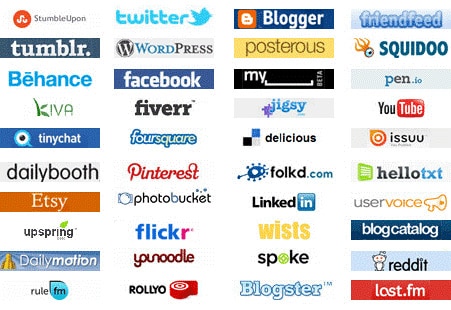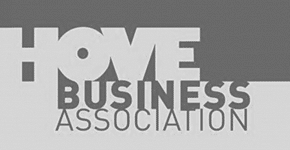
When starting a new web build/SEO project, one of the first checks we perform is to ask a very simple question. Does the website we are working on look like/feel like a “big” brand and does the site comply with Google’s web quality guidelines.
Table Of Contents:
- 1 - What are Google’s Web Quality Guidelines?
- 2 - What Does a Website Need to Do to Comply With Google’s Quality Guidelines?
- 3 - Branding / Logos
- 4 - Rich Media
- 5 - Standard Pages
- 6 - Does The Site Include Legal Pages/Information?
- 7 - Contact Information
- 8 - Ubiquitous Presentence/Degree of Recommendation
- 9 - Blog Update Frequency/Social Activity
- 10 - Authorship
- 11 - Original Content, Authority, Trustworthiness (E-A-T)
- 12 - HTML5 Schema
- 13 - Integrations
- 14 - Outbound Links
- 15 - Conclusion
What are Google’s Web Quality Guidelines?
In addition to its algorithms, Google employs a small army whose job it is to manually evaluate and score websites. To aid this process, Google publishes a 160+ page document each year (which is always leaked). The document gives an important insight into the criteria the search engine applies when determining the search quality rating of a site and whether it should appear prominently within its index.
The idea is that good search engines give results that are helpful for users in their specific language and locale.
What follows are a series of technical checks e.g. does the site work in most browsers, does the site contain malware or anything that will harm a user, is the site genuine or is it built with the intention of misleading users. If a site is real, who is behind it, is it connected to a real person. Does the company or person who owns the site have a larger digital footprint e.g. social profile/reviews. Finally how well does a page achieve its purpose. If a site doesn’t make the grade, its game over.
What Does a Website Need to Do to Comply With Google’s Quality Guidelines?
Unless you’re having trouble sleeping, 160 pages is understandably too much to read. To summarise, Google is looking for the following, each of which indicates whether the site is real.
Branding / Logos
Does your site have a clear, professionally designed logo and matching colour scheme/typography or does the logo look like it was purchased from fiverr.com. Using a strong identifiable logo is essential for brand recognition and attracting new customers. Design a logo that is memorable and potential clients will remember seeing an eye catching / cool logo that provides a service/product they are looking for.
The simple fact is people make judgements based on first impressions and brand identity, logo, colours, typography will result in prospective clients making a decision about whether judgement about whether they want to do business with a company (trust) regardless of an owners qualifications/ability to deliver.
Rich Media
Pages that contain rich media, e.g. high quality images and / or video rank better than plain text. High quality images, infographics again re-enforce brand identify but also aid in telling a story and will result in higher well times (now an essential ranking ingredient). The same is true for video’s. Not only do they keep a user on a page for longer, Google’s algorithms and web quality team will reward sites that utilise high quality images.
Standard Pages
Does the site have the following pages: home, about, contact. This may seem like stating the obvious. These pages are the basic foundation for a website and they are often overlooked/neglected by lower quality sites.
Does The Site Include Legal Pages/Information?
Privacy Policy, Terms of Services, Delivery Information, Returns Policy if applicable. If in the EU, does the site have a cookie compliance disclaimer. Again this may sound like common sense, but a significant number of lower quality sites will omit these pages/features. If you are in the UK and running a limited company, trading standards will insist your company house number and registered business address displayed on your site is aligned with the records on company house.
Contact Information
Does the site have a contact number, postal address, email address. Also known as NAP. For local ranking, this information must be present on your site (ideally in the footer and on every page). This information should then be reflected on a Google business page and 3rd party sites. Not only is this considered in manual reviews but also picked up on by Google’s algorithms to establish whether a site is genuine. Sites such as Freeindex, Yelp, Yell and many others offer free listings that will re-enforce this ranking signals. These are also important considerations for semantic search for the likes of SIRI, Cortana and Google Voice.
Ubiquitous Presentence/Degree of Recommendation
Does the company maintain profiles on the major social networks e.g. Facebook, Twitter, Google Plus, Pinterest, Instagram, Youtube? Are there other references to the company operating the site e.g. reviews sites, forums, Wikipedia?
Each 3rd party profile offers the capacity to add a NAP citation, links back to your site and referral traffic if actively managed. In addition each 3rd party profile is a brand signal. These are both actively looked for by Google’s web quality team and taken into account as a ranking signal by Google’s many algorithms.

Blog Update Frequency/Social Activity
Active/Real sites owners will have active social profiles and a regularly updated blog. Active companies will maintain both social profiles and be active bloggers. As mentioned above, this generates referral traffic, brand signals, feeds Google’s Caffeine algorithm and expands the range of keywords users may find a site for through organic search.
Authorship
While Google discontinued authorship a few years ago, authorship appears to be coming back in a big way with the semantic web and use of structured data.

Original Content, Authority, Trustworthiness (E-A-T)
Does the site contain a satisfying amount of original content that achieves its purpose. This is one of the most important aspects, thinking back to authorship the search quality teams are tasked with critically asking if the content of the site aligns with the expertise of the author/owner and if it can be trusted. E.g. Medical advice.
To summarise, the web quality team are looking for Expertise, Authority, Trust (E-A-T).
HTML5 Schema
Does the site make use of structured data. Schema is being pushed hard by search engines as we move ever closer to the semantic web. This allows the search engine to better calculate context of a site around topics. Whilst only a small percentage of sites use schema, it gives those using it a significant edge.
Integrations
Is the site connected to Google Analytics / Google Webmaster Tools / Google Business. If not why. Is the site owner trying to hiding something? A well built site that performs well and retains a user’s attention measured within Google Analytics will perform better in the search engines than a similar site with a higher bounce rate.
Outbound Links
Where does the site link to? Real sites will often link out to related sites. Outbound links build context. An analysis of sites ranking well will frequently show sites linking to authority sites containing related information. These include suppliers, associated brands and authority sources.

This may seem counter intuitive in view of how Pagerank scoring is supposed to work. Think of your site like a station in London’s underground network. Not only does Google want other stations (sites) to link to yours, your site should act as part of a much larger network. A good station (site) not only serves as a destination but also a hub allowing users / search engines to travel to new / related 3rd party sites.
Conclusion
A lot of what has been mentioned above is common sense/standard with most websites builds (from a reputable developer). Given these elements are considered and graded by a dedicated team at Google, the web quality guidelines offers a paint by numbers foundation and should inspire site owners to ensure their online presence is compliant and as water tight as possible.







